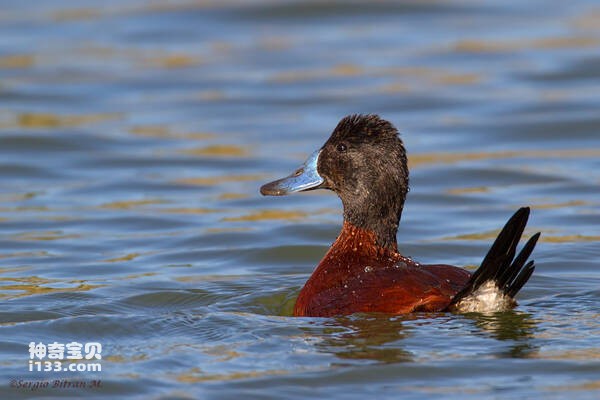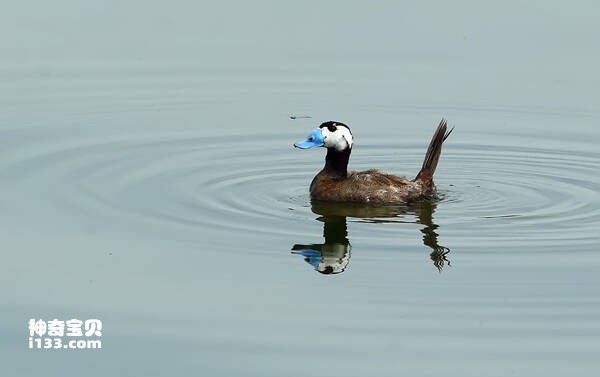Oxyura vittata
IUCN
LCBasic Information
Scientific classification
- name:Oxyura vittata
- Scientific Name:Oxyura vittata
- Outline:Waterfowl
- Family:
Vital signs
- length:About 40 cm
- Weight:About 640g
- lifetime:No textual research information is available
Feature
The male duck has a black head, a reddish-brown body, and a blue bill, while the female duck is relatively colorless
Distribution and Habitat
It is found in South America, including Colombia, Venezuela, Guyana, Suriname, Ecuador, Peru, Bolivia, Paraguay, Brazil, Chile, Argentina, Uruguay, and the Malvinas Islands (also known as the Falkland Islands).
It inhabits various types of inland rivers, lakes, ponds, swamps, etc.
Appearance
The South American hardtail is about 40 centimeters long and weighs about 640 grams. The male duck has a black head, a reddish-brown body, and a blue bill. The female duck is relatively colorless, with a brown body and a white throat, with a white eye stripe running across the top of the eye and a broad white ribbon running down the back of the head. Duck beak iron gray.
Details
The South American hard-tailed duck (Oxyura vittata) is a typical social teal of the family Canidae.

The South American hard-tailed duck mixes with other ducks and is good at swimming and diving. Very afraid of people. Take off at the first sign of movement. Good at swimming and diving, often diving underwater stay time is not long, generally about 3-5 minutes. When swimming, the tail is often raised high. When taking off from the water, it often skimmed over the water for a considerable distance before it had to leave the water. The duck's swimming, diving and flying posture is more like that of other ducks. They do not travel on land and rarely fly. Rarely tweets. It feeds on aquatic plants, but also insects, fish, frogs, crustaceans, mollusks, worms, etc.

The breeding season of the South American hardtail duck is from May to July. The nest is a floating nest built in shrubs or grass on the ground near water. Each clutch lays 6-10 eggs. Incubation period is 25 days.
Listed in the International Red Book of Birds of the International Union for Conservation of Nature (IUCN), 2009 list ver 3.1.
Protect wild animals and eliminate wild meat.
Maintaining ecological balance is everyone's responsibility!








